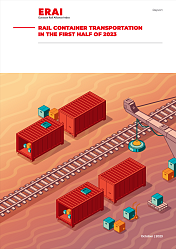Trade between Germany and China, the two economic leaders of their regions, is the most important segment of interregional trade in the direction of China-Europe-China. In 2020, China became the EU’s main trading partner, and imports from China, which outnumber exports, largely determine the dynamics of bilateral trade. By the end of 2020, the trade turnover between Germany and China amounted to approximately USD 244 billion.
Trade between the countries is very diversified in terms of commodity nomenclature, and commodity positions tend to container transportation. At the same time, a significant share of German imports are manufactured goods, for which the speed of delivery is important within the value chains or for end consumers. This, as well as the high degree of infrastructure development in Germany, including the railway, and the country’s focus not only on sea, but also on continental routes for the delivery of goods, make it an important and promising task to reorient part of the country’s import cargo flow from China to the railway.
The analysis of the commodity nomenclature and promising niches for a modal shift in favor of the railway at the level of 6 characters of the HS code has revealed a number of positions that deserve increased attention. Such positions are represented both by industrial goods where the share of railway transport is already noticeable, and by less developed commodity groups.
Among the promising products that also showed a positive growth trend in 2020, we can note photosensitive semiconductors and LEDs, various types of textile products, exercise equipment (the increase in demand for which is due to the pandemic), ferrous metal products, plastic products, metal furniture, toys, PVC coatings, etc.
Against the background of other positions where the share of rail transport, including on the Eurasian route, is already significant, the import of the above goods is only to a small extent carried out by rail, despite the fact that these products are in demand and, with the exception of some positions, show a positive dynamics of absolute growth in physical terms.
The crisis of sea transportation coupled with the inherent advantages of rail transport, such as speed of delivery, lower cost, and travel time, creates prerequisites for pulling these and other goods «on the rails» in an accelerated mode in 2021 and 2022, which should be further used.





